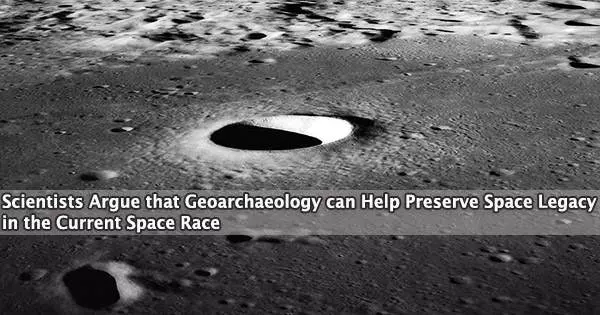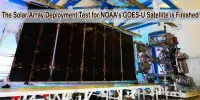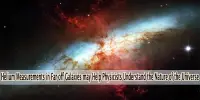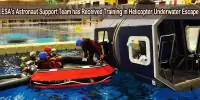Planetary geoarchaeology, the study of how cultural and natural processes on Earth’s moon, on Mars, and throughout the solar system may be altering, preserving, or erasing the material record of space exploration, has been proposed by two researchers from the Kansas Geological Survey at the University of Kansas and their colleagues as a new scientific subfield.
“Until recently, we might consider the material left behind during the space race of the mid-20th century as relatively safe,” said Justin Holcomb, postdoctoral researcher at the Kansas Geological Survey, based at the University of Kansas, and lead author on a new paper introducing the concept of planetary geoarchaeology in the journal Geoarchaeology.
“However, the material record that currently exists on the moon is rapidly becoming at risk of being destroyed if proper attention isn’t paid during the new space era.”
According to the Union of Concerned Scientists, mankind have launched more than 6,700 satellites and spacecraft from nations all over the world since the beginning of space exploration. The United States alone accounts for more than 4,500 civil, commercial, governmental and military satellites.
“We’re trying to draw attention to the preservation, study and documentation of space heritage because I do think there’s a risk to this heritage on the moon,” Holcomb said. “The United States is trying to get boots on the moon again, and China is as well. We’ve already had at least four countries accidentally crash into the moon recently. There are a lot of accidental crashes and not a lot of protections right now.”
Holcomb began considering the idea of planetary geoarchaeology during the COVID-19 lockdown. Applying geoarchaeological tools and methods to the movement of people into space and the solar system is a natural extension of the study of human migration on Earth, the focus of the ODYSSEY Archaeological Research Program housed at KGS and directed by Holcomb’s co-author, Rolfe Mandel, KGS senior scientist and University Distinguished Professor in the Department of Anthropology.
“Human migration out of Africa may have occurred as early as 150,000 years ago, and space travel represents the latest stage of that journey,” Mandel said. “Although the ODYSSEY program is focused on documenting the earliest evidence of people in the Americas, the next frontier for similar research will be in space.”
How planetary geoarchaeologists will determine whether an item is worth preserving is an open question.
“We feel that all material currently existing on extraterrestrial surfaces is space heritage and worthy of protection,” Holcomb said. “However, some sites, such as the very first footprints on the moon at Tranquility Base or the first lander on Mars, Viking 1, represent the material footprint of a long history of migration.”
Until recently, we might consider the material left behind during the space race of the mid-20th century as relatively safe. However, the material record that currently exists on the moon is rapidly becoming at risk of being destroyed if proper attention isn’t paid during the new space era.
Justin Holcomb
Beyond those “firsts,” making decisions on a case-by-case basis will be necessary to sort through the tens of thousands of pieces of debris now in orbit or scattered across the surfaces of the moon and Mars, which many people refer to as “trash” but Holcomb and his colleagues see as heritage.
“We have to make those decisions all the time with archaeological sites today,” Holcomb said. “The moon has such a limited record now that it’s totally possible to protect all of it. Certainly, we need to protect space heritage related to the Apollo missions, but other countries, too, deserve to have their records protected.”
With resources for protecting space heritage limited, Holcomb and his colleagues advocate for developing systems to track materials left in space.
“We should begin tracking our material record as it continues to expand, both to preserve the earliest record but also to keep a check on our impact on extraterrestrial environments,” he said. “It’s our job as anthropologists and archaeologists to bring issues of heritage to the forefront.”
Beyond the moon, Holcomb wants to see planetary geoarchaeology extend to issues related to exploration and migration to Mars. He points to NASA’s Spirit Rover as an example. The rover is currently in danger of being entirely buried behind approaching sand dunes after becoming stuck in Martian sand in 2008.
“As planetary geoarchaeologists, we can predict when the rover will be buried, talk about what will happen when it’s buried and make sure it’s well documented before it’s lost,” he said. “Planetary scientists are rightfully interested in successful missions, but they seldom think about the material left behind. That’s the way we can work with them.”
Holcomb thinks geoarchaeologists ought to be a part of upcoming NASA missions to assure the security and preservation of space history. Geoarchaeologists on Earth can start laying the groundwork for that work in the interim by promoting legislation to protect and preserve space heritage, researching the impacts extraterrestrial ecosystems have on artifacts left behind by space missions, and participating in international discussions about these issues.
As for being part of a space mission himself?
“I’ll leave that to other geoarchaeologists,” Holcomb said. “There’s plenty to do down here, but I do hope to see an archaeologist in space before it’s all over.”
















